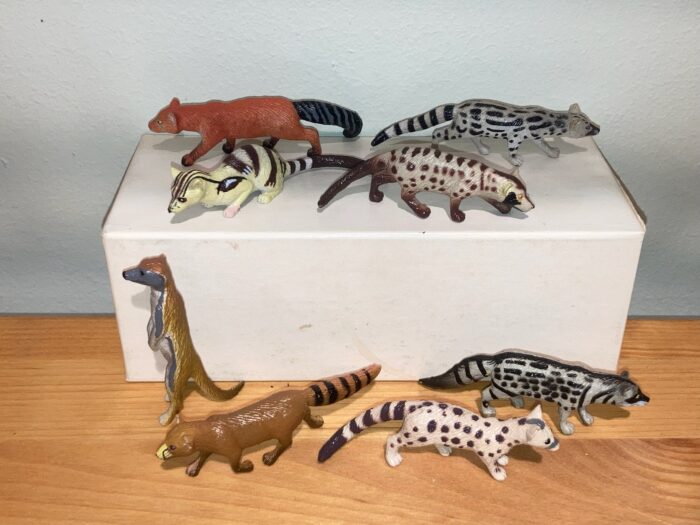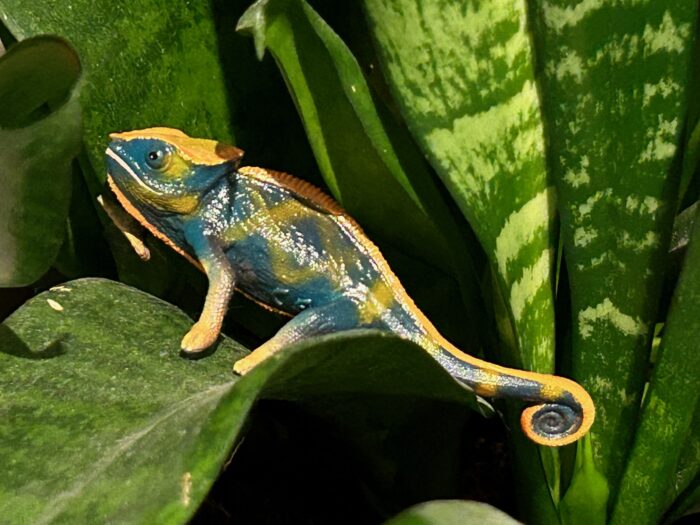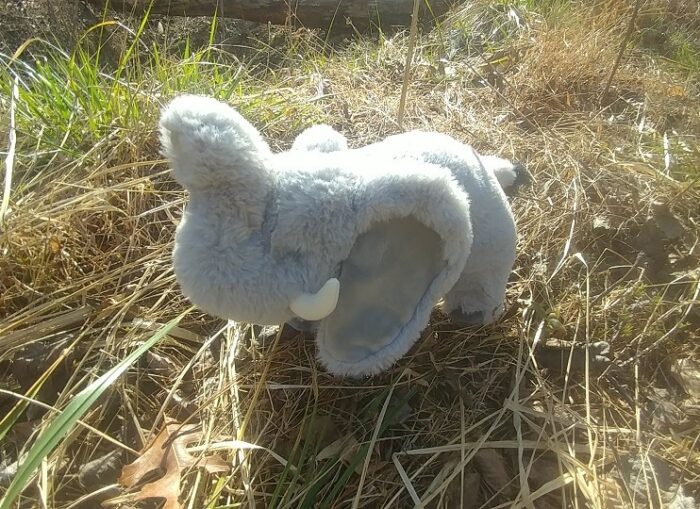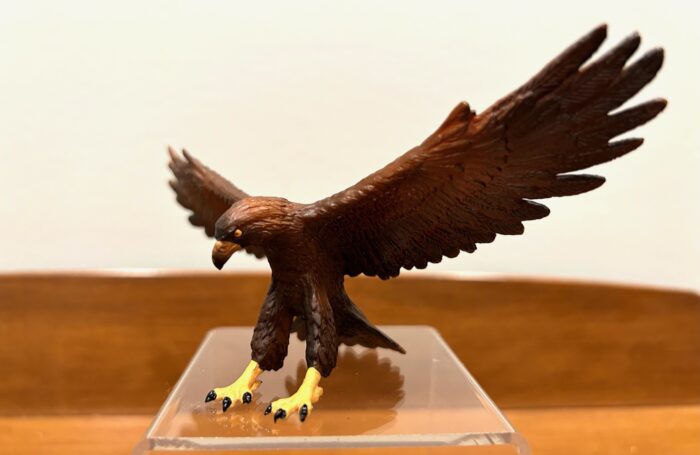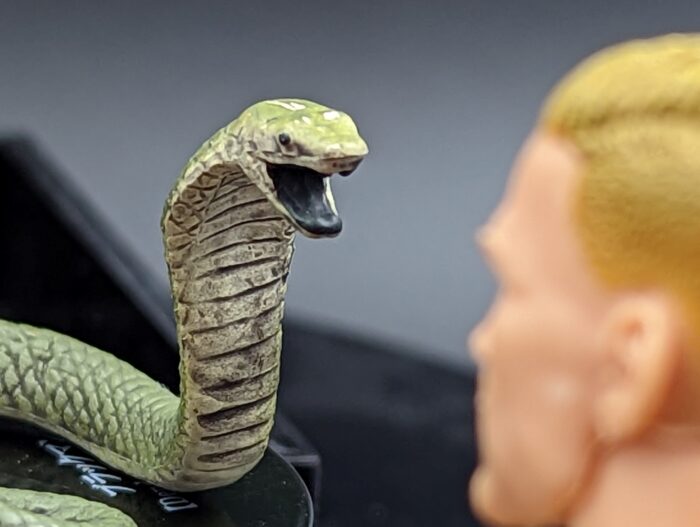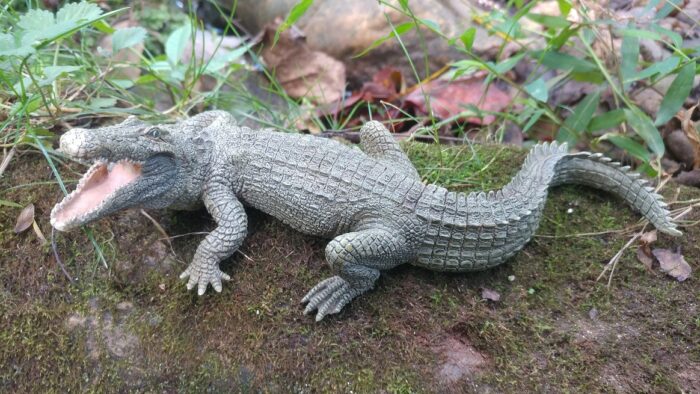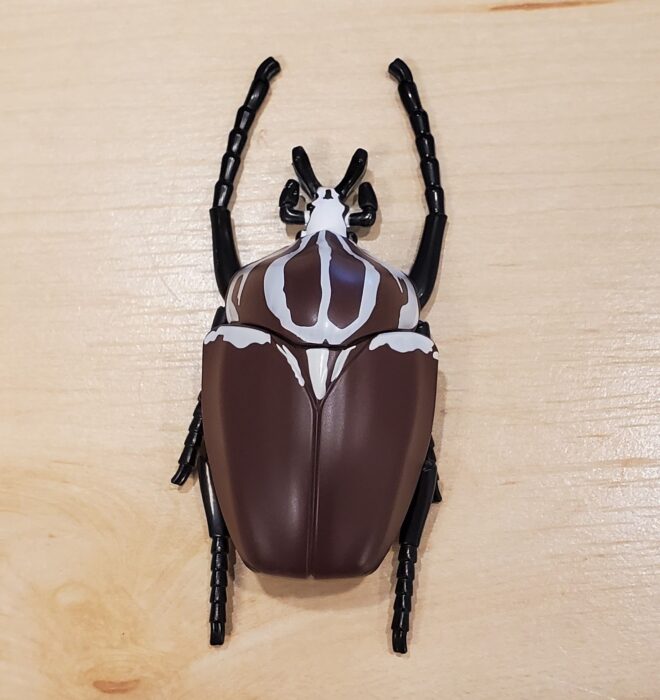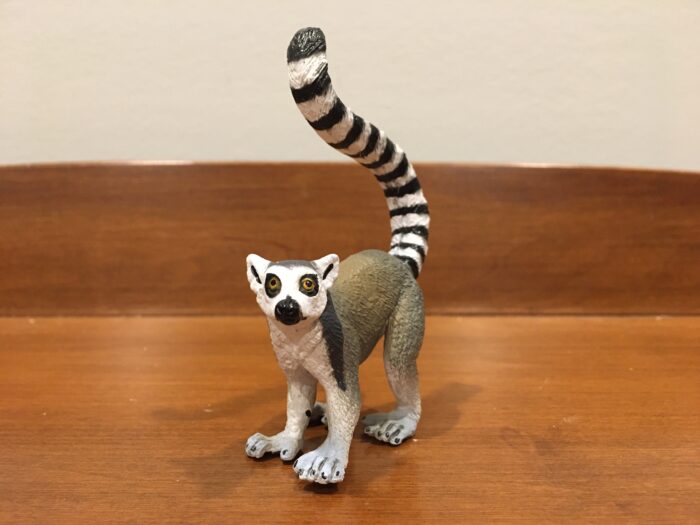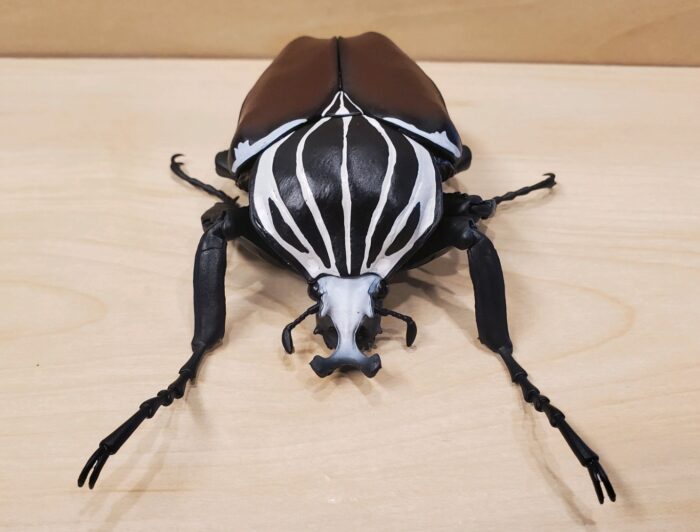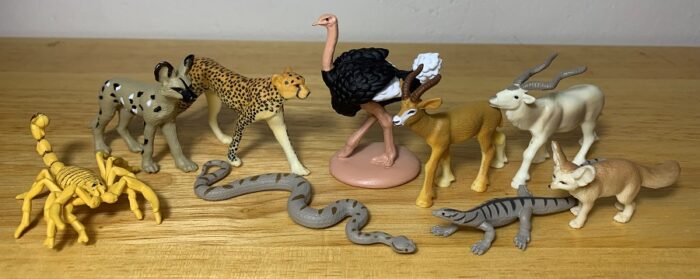Review and images by Birdsage; edited by bmathison1972
Here’s my review of one of the most interesting sets from Play Visions’ Habitat: Earth line of animal figures: the “Civets, Genets & Mongoose” collection from 1998. All of these tube-sized models are between 6.5-8.5 cm (~2.5-3.5 in) long and are marked with a number from 1 to 8, ©, PV, 1998, CHINA, and the name of the figure.

